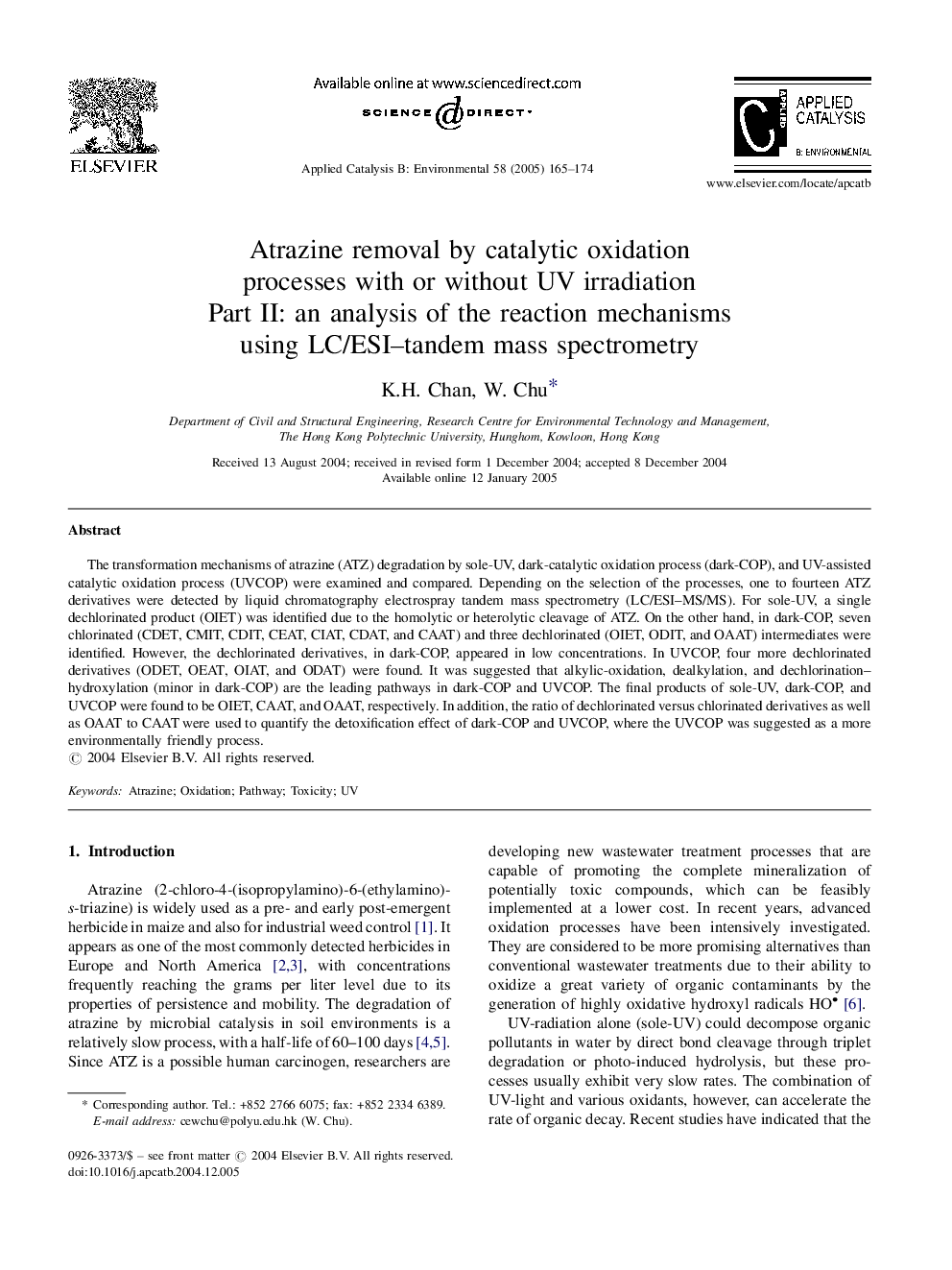| کد مقاله | کد نشریه | سال انتشار | مقاله انگلیسی | نسخه تمام متن |
|---|---|---|---|---|
| 9609883 | 46540 | 2005 | 10 صفحه PDF | دانلود رایگان |
عنوان انگلیسی مقاله ISI
Atrazine removal by catalytic oxidation processes with or without UV irradiation
دانلود مقاله + سفارش ترجمه
دانلود مقاله ISI انگلیسی
رایگان برای ایرانیان
موضوعات مرتبط
مهندسی و علوم پایه
مهندسی شیمی
کاتالیزور
پیش نمایش صفحه اول مقاله

چکیده انگلیسی
The transformation mechanisms of atrazine (ATZ) degradation by sole-UV, dark-catalytic oxidation process (dark-COP), and UV-assisted catalytic oxidation process (UVCOP) were examined and compared. Depending on the selection of the processes, one to fourteen ATZ derivatives were detected by liquid chromatography electrospray tandem mass spectrometry (LC/ESI-MS/MS). For sole-UV, a single dechlorinated product (OIET) was identified due to the homolytic or heterolytic cleavage of ATZ. On the other hand, in dark-COP, seven chlorinated (CDET, CMIT, CDIT, CEAT, CIAT, CDAT, and CAAT) and three dechlorinated (OIET, ODIT, and OAAT) intermediates were identified. However, the dechlorinated derivatives, in dark-COP, appeared in low concentrations. In UVCOP, four more dechlorinated derivatives (ODET, OEAT, OIAT, and ODAT) were found. It was suggested that alkylic-oxidation, dealkylation, and dechlorination-hydroxylation (minor in dark-COP) are the leading pathways in dark-COP and UVCOP. The final products of sole-UV, dark-COP, and UVCOP were found to be OIET, CAAT, and OAAT, respectively. In addition, the ratio of dechlorinated versus chlorinated derivatives as well as OAAT to CAAT were used to quantify the detoxification effect of dark-COP and UVCOP, where the UVCOP was suggested as a more environmentally friendly process.
ناشر
Database: Elsevier - ScienceDirect (ساینس دایرکت)
Journal: Applied Catalysis B: Environmental - Volume 58, Issues 3â4, 28 June 2005, Pages 165-174
Journal: Applied Catalysis B: Environmental - Volume 58, Issues 3â4, 28 June 2005, Pages 165-174
نویسندگان
K.H. Chan, W. Chu,